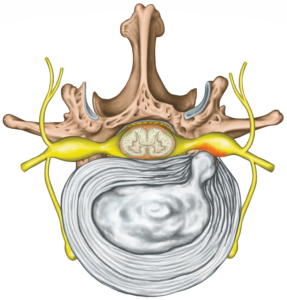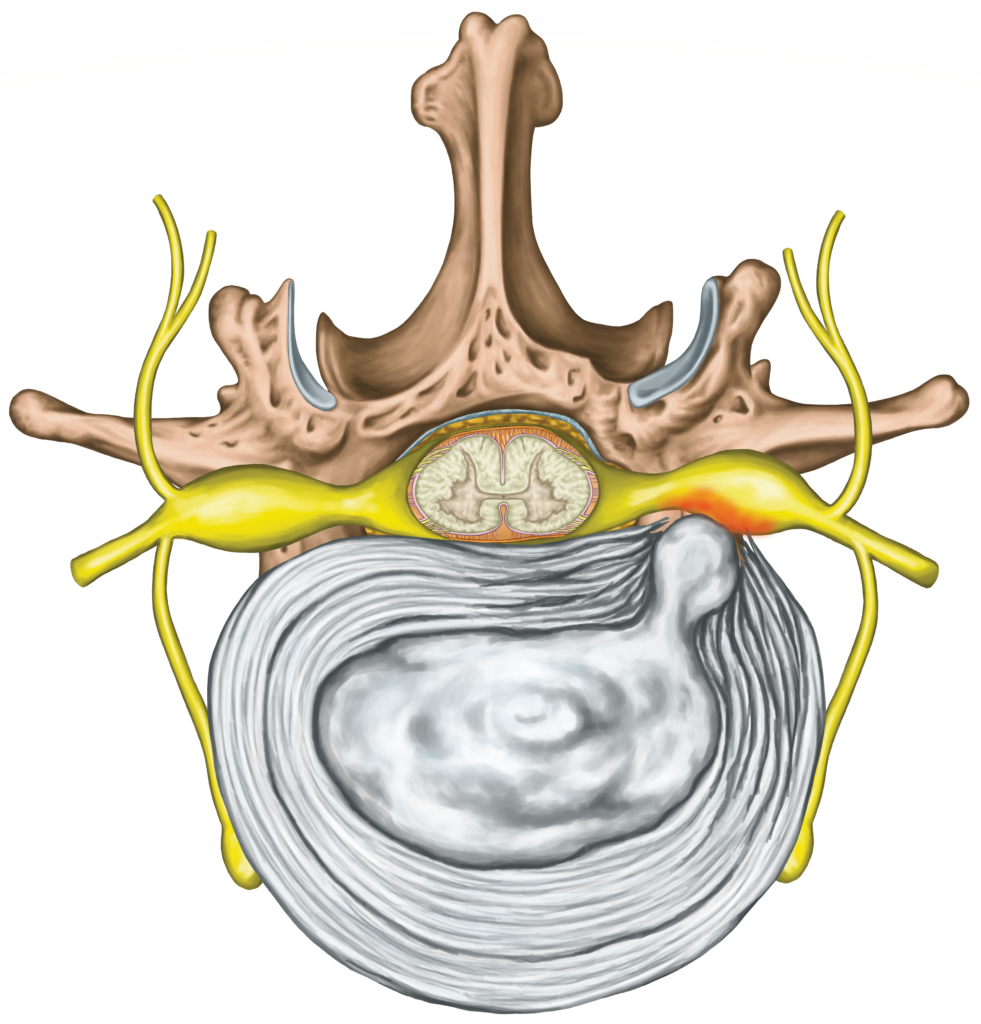Which are the conditions of the spine causing pain?
‘Back problems’ include a variety of conditions that affect all components of the spine, the bones, joints, connective tissue, muscles and nerves. They can involve all segments of the spine, the cervical spine, thoracic spine and the lumbar spine, but also the sacrum and tailbone (coccyx). However, the lumbar region of the spine is the one more often causing pain due to its greater mobility following the cervical spine.
The most common conditions of the spine are:
- Disc disorders (such as herniated discs or disc degeneration)
- Sciatica and curvature of the spine (scoliosis)
- Back pain/problems not elsewhere classified.
The main manifestation of spinal pathology is pain. In some cases, pain may be unspecific, meaning it is not caused by a particular pathology, when having episodes of pain in the lower, middle, and upper back that may arise and settle spontaneously. For instance, the ‘sciatica’ is a very common a back problem characterised by pain shooting down one leg often accompanied by tingling, numbness or weakness in that leg. Other times back pain may result from an injury, caused by a fall, motor vehicle accidents or physical overuse.
In the ageing population, the degenerative changes of the spine may lead to the narrowing of the spinal canal, more often involving the lumbar tract through which the spinal cord passes. This alteration can impair walking as well as generate neurological symptoms in both legs. Infection and fracture are other, less frequent conditions that are managed surgically or conservatively.
The causes at the basis of spinal problems are many and can be work-related or arising from sport and lifestyle activities, injuries, diseases such as arthritis, disc degeneration and osteoporosis.
The factors that increase the risk of developing back problems include age, physical fitness, smoking, being overweight, and those professions requiring heavy physical activities.
Back problems are often recurrent and may require a long-term management. They are more common in men between 30 and 50 years of age and in all ageing individuals.

Intervertebral disc: Anatomical considerations
Disc herniation is one of the most frequent causes of back pain mostly affecting the lower spine.
What is the intervertebral disc of the spine? Based on the anatomical description on our website, the intervertebral disc is a cushion-like structure positioned between the vertebrae to absorb stress to the spine and facilitate movement.
The disc consists of a fibrous outer ring, the annulus fibrosus, and a jelly-like material filling the centre of the disk, the nucleus pulposus. In a standing position the weight draws onto the nucleus allowing it to expand whilst the ring keeps it in place. The annulus maintains the strength of the spine and acts as shock absorber. Many nerve endings supply the annulus fibrosus and, as a result, an injury to this structure causes pain and neurological symptoms.
The herniation of the intervertebral disk, also named disk prolapse, ruptured disk or slipped disk, occurs when the gelatinous content of the disk protrudes towards or outside the rim of the disk.
The initial stage of this pathology involves the herniation of the nucleus pulposus towards the annulus fibrosus. The annulus fibrosus can present one or more tears or a complete rupture causing the total or partial release of the nucleus pulposus into the outer space. This can produce pressure to the spinal cord and nerve roots. When it occurs, disc herniation causes local inflammation and possible nerve damage resulting in significant pain, clinically known as radiculopathy, and in some cases severe neurological symptoms in form of paresis, e.g. foot drop.
Disc herniation is one of the most comprehensive pathologies present in the Lex Medicus educational library. In the pathology, we describe the stages leading to disc herniation, the distinct symptoms arising in each section of the spine, how to form a diagnosis, the treatment modalities from conservative to surgical, including a detailed description of complex techniques such as microdiscectomy, laminectomy, spinal fusion, posterior lumbar interbody fusion, transforaminal lumbar interbody fusion, anterior lumbar interbody fusion, bone graft, anteriorcervical discectomy and fusion, posteriorcervical lamino-foraminotomy, artificial disc replacement in the lumbar spine, minimal invasive spine surgery, rehabilitation and prevention.
If you wish to read the full pathology, please follow the link.
You can read the anatomy of the spine here.
To understand all spinal tests used by an expert to diagnose many pathologies of the spine follow the link for the Examination of the spine.
